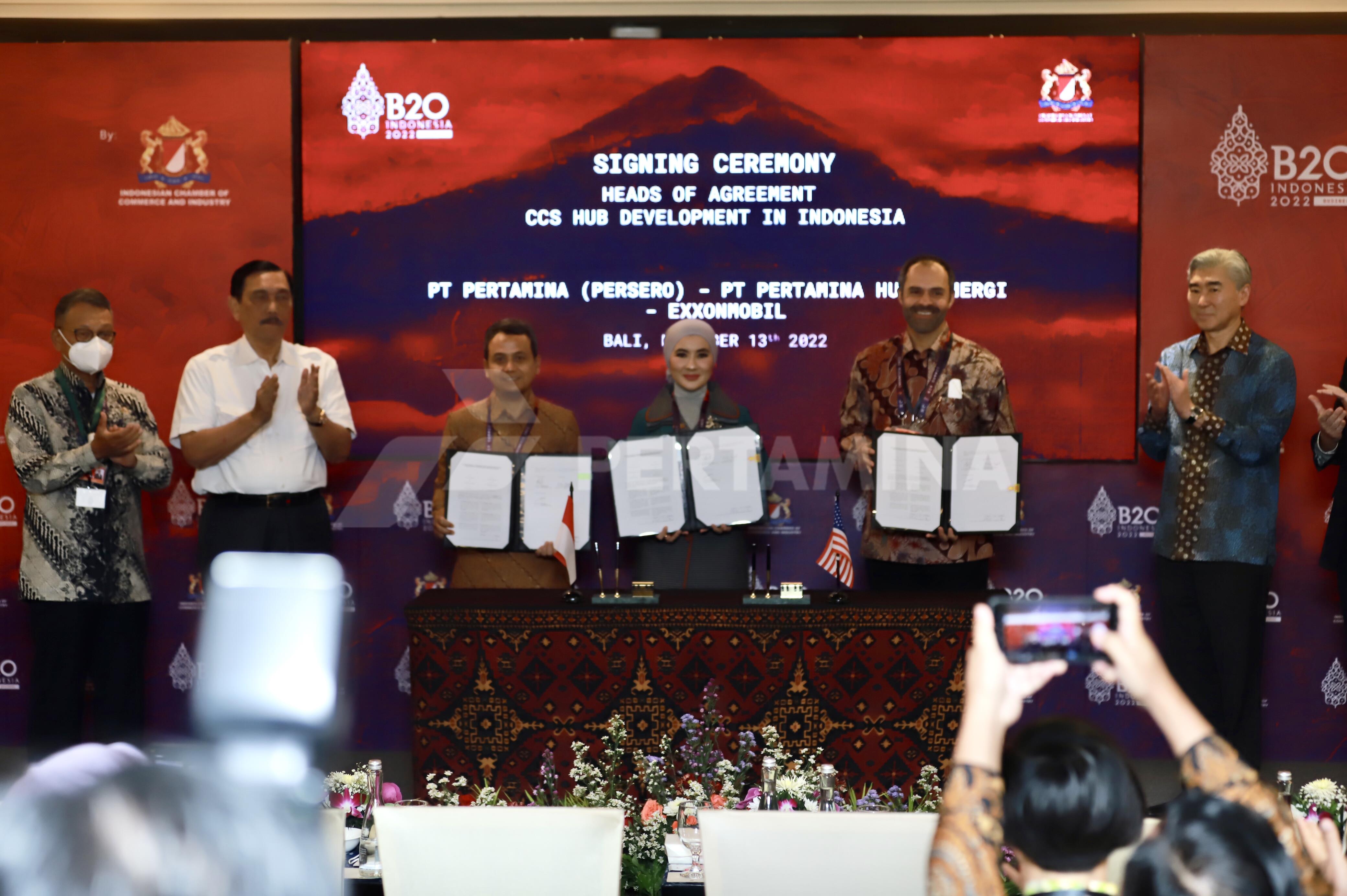
Pertamina–ExxonMobil Strengthen Decarbonization Cooperation to Pursue 2060 Zero Emissions Target
Jakarta, November 13, 2022 - A joint study by Pertamina and ExxonMobil found carbon dioxide (C02) potential with a capacity of up to 1 billion tons in Pertamina's oil and gas fields. This large CO2 capacity can permanently store CO2 emissions throughout Indonesia at the current average for the next 16 years.
The discovery of the vast CO2 potential shows the turning point of Carbon Capture and Storage (CCS) business development and decarbonization efforts in Indonesia. On this basis, Pertamina and ExxonMobil strengthen cooperation on CCS development, which is carried out to reduce carbon emissions while supporting economic growth through investment, job creation, and increasing income for the state.
The collaboration was marked by the signing of the Head of Agreement (HoA) by President Director of Pertamina, Nicke Widyawati, with President Asia Pacific Exxon Mobile Low Carbon Solution and President ExxonMobil Indonesia, Irtiza Sayyed, and witnessed by the U.S. Ambassador for the Republic of Indonesia Sung Y. Kim* in Nusa Dua, Bali on Sunday, November 13, 2022. Present at the signing of this cooperation were the Coordinating Minister for Maritime Affairs and Investment, Luhut B Pandjaitan, and the Minister of Energy and Mineral Resources. Arifin Tasrif.
Pertamina's collaboration with Exxon is carried out through a joint study to see the potential for CO2 storage in saline formations in Pertamina's working area. In addition, Pertamina is conducting a study of how efforts and initiatives for decarbonization are carried out. One is through CCS, which is expected to contribute to energy security.
The signing of the HoA is a follow-up to the Joint Study Agreement (JSA) signed in the United States on May 13, 2022. Through this strengthening of cooperation, Pertamina and ExxonMobil will finalize and prepare a commercial model design for a regional CCS hub development in PT Pertamina Hulu Energi OSES working area with the potential to store CO2 domestically and internationally.
Coordinating Minister for Maritime Affairs and Investment, Luhut Binsar Panjaitan, said the Indonesian government was working to develop regulations that support Carbon Capture & Storage (CCS) and started discussions with governments in other regions.
"This mutual agreement is a solid foundation for Indonesia to achieve Indonesia's net zero targets by 2060 or sooner," said Luhut B. Pandjaitan.
President Director of Pertamina, Nicke Widyawati, said the CCS development and decarbonization cooperation follows Pertamina's efforts to support the government's program in accelerating the energy transition and emission reductions of 29 percent by 2030. "One of the selected fields has a vast capacity to store carbon dioxide. The technology implementation will prioritize resources in the domestic sphere, create job opportunities, and increase income for the country," said Nicke.
Nicke emphasized that the fastest way to develop the transition to new renewable energy and decarbonization in Indonesia, is through partnerships. A partnership is to answer three global challenges at once, namely technology, finance, and human capital.
The application of CCS technology, added Nicke, is expected to play a significant role in reducing greenhouse gases in the atmosphere, which contribute to global warming, climate change, ocean acidification, and loss of biodiversity.
"The development of CCS technology has a double impact, along with reducing emissions while increasing national oil and gas production," said Nicke.
Pertamina is working on six CCS/CCUS projects by selecting fields that can be used as CO2 injection sites. The six potential lands are located in various offshore areas from Sumatra, Java, Kalimantan, and Sulawesi.
"The development of CCS technology is in line with Pertamina's commitment to implement Environmental, Social, & Governance (ESG) in all lines of the company's business to encourage business sustainability in the future," said Nicke.**